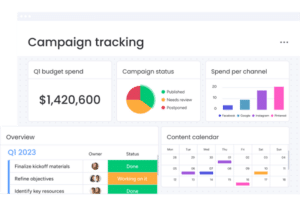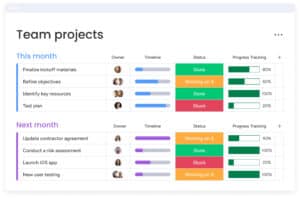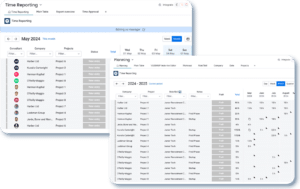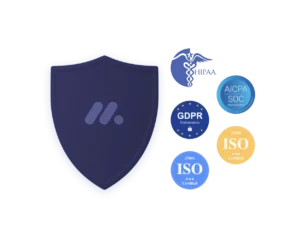Introduction
In the digital age, where agility and efficiency are the bedrock of success, businesses are increasingly turning to Software as a Service (SaaS) solutions to streamline their operations. This shift has seen a surge in the adoption of various SaaS platforms across all business functions. From customer relationship management (CRM) to human resources (HR), from project management to marketing automation. However, to truly harness the potential of these tools, connecting SaaS applications for optimized operations has become a critical strategy for businesses aiming to achieve operational excellence.
The Rising Importance of SaaS in Business Operations
The concept of connecting SaaS applications for optimized operations is not just about linking different software solutions. It’s about creating a cohesive, interoperable ecosystem where data flows seamlessly between platforms, processes are automated and streamlined, and decision-making is informed by unified insights. This approach enables businesses to leverage the full power of their SaaS investments. It transforms isolated tools into a synergistic framework that drives efficiency, enhances productivity, and fosters innovation.
Overcoming Silos with SaaS Connectivity
Yet, despite the clear benefits, many organizations find themselves navigating a complex web of disconnected SaaS tools, each operating in a silo. This fragmentation can lead to inefficiencies, data inconsistencies, and missed opportunities for automation and insights. Therefore, the imperative to connect SaaS applications for optimized operations has never been more pressing. By doing so, businesses can break down silos, enhance visibility across all operations, and create a more agile, responsive, and competitive organization.
Unveiling the Roadmap for SaaS Integration
As we delve deeper into the nuances of connecting SaaS applications for optimized operations, we’ll explore the challenges, benefits, and practical strategies for creating a connected SaaS ecosystem. From identifying key integration points to selecting the right tools and platforms for integration, we’ll provide actionable insights to guide you on this transformative journey.
The Need for SaaS Connectivity in Today’s Business Ecosystem
The digital transformation has ushered in an era where business agility and data-driven decision-making are paramount. In this landscape, the reliance on multiple SaaS platforms has become a double-edged sword. While offering unparalleled flexibility and scalability, it also introduces complexity and fragmentation. The need for connecting SaaS applications for optimized operations emerges as a critical solution to these challenges. It enables businesses to harness the full potential of their digital tools.
Escalating Complexity in Digital Toolsets
As businesses grow and evolve, so does their suite of SaaS applications. Each department might adopt different tools that best suit their immediate needs, leading to a sprawling ecosystem of unconnected applications. This fragmentation can result in data silos, where valuable insights are trapped within specific departments or software. As a result, this hinders comprehensive analysis and strategic decision-making. Connecting SaaS applications for optimized operations becomes imperative to navigate this complexity. It ensures that data flows freely across the organizational landscape.
The Imperative for Real-time Data and Process Integration
In a fast-paced business environment, the ability to access and act on real-time data is a competitive advantage. Disconnected SaaS tools can delay the transfer of critical information, slowing down response times and impacting customer satisfaction. By connecting SaaS applications for optimized operations, businesses can achieve real-time data synchronization and process integration. This enables instant access to information and facilitates swift decision-making and action.
Enhancing Collaboration Across Teams and Departments
Effective collaboration is the backbone of any successful organization. However, when teams use different SaaS tools that are not interconnected, collaboration can be difficult. Information gets lost in translation, and efforts are duplicated, leading to inefficiencies and frustration. Connecting SaaS applications for optimized operations is essential to break down these barriers. It enables seamless collaboration and information sharing across teams and departments, thereby enhancing overall productivity and job satisfaction.
Driving Scalability and Innovation
For businesses aiming to scale, the ability to adapt and innovate quickly is crucial. A connected SaaS ecosystem not only streamlines operations but also provides a flexible foundation for growth and innovation. It enables businesses to easily add or modify services without disrupting existing workflows, fostering an environment where innovation can thrive. Connecting SaaS applications for optimized operations is, therefore, a strategic investment in the future scalability and innovation capacity of the business.
Omnitas Newsletter
Sign up for our monthly newsletter to stay up-to-date on our latest blog articles, videos and events!
Thank you!
You have successfully joined our subscriber list.
Key Benefits of Connecting SaaS Applications
In the quest for operational excellence, connecting SaaS applications is not just a technological imperative but a strategic enabler of business success. This integration offers a multitude of benefits, from enhanced data flow and process efficiency to cost savings and improved decision-making capabilities. Below, we explore the pivotal advantages that underscore the value of SaaS connectivity.
Enhanced Data Flow and Accessibility
One of the most immediate benefits of connecting SaaS applications is the facilitation of seamless data flow across the organization. This connectivity ensures that data from disparate sources can be easily accessed, combined, and analyzed, breaking down silos that hinder insight and innovation. With data readily available, businesses can achieve a holistic view of their operations, customer interactions, and market trends, enabling informed decision-making and strategic planning.
Streamlined Workflows and Processes
Connecting SaaS applications for optimized operations significantly reduces manual data entry and the need for multiple software interfaces, streamlining workflows and processes across the organization. This efficiency not only saves time but also minimizes the risk of errors, enhancing overall operational quality. Automation of routine tasks frees up employees to focus on more strategic activities, thereby increasing productivity and job satisfaction.
Improved Decision-Making with Unified Analytics
By integrating SaaS applications, businesses can aggregate data from various sources into a unified analytics platform, providing a comprehensive view of performance metrics and KPIs. This integrated perspective enables deeper insights and more accurate forecasting, supporting better decision-making. Leaders can identify trends, pinpoint inefficiencies, and make informed decisions on resource allocation, strategy adjustments, and innovation opportunities.
Cost Reduction and ROI Improvement
The optimization of operations through SaaS connectivity can lead to significant cost savings and a better return on investment. By eliminating redundant processes and automating manual tasks, businesses can reduce operational costs. Moreover, the improved efficiency and productivity resulting from integrated systems can drive revenue growth. It enhances the overall financial performance of the organization.
Fostering Innovation and Competitive Advantage
A connected SaaS ecosystem not only streamlines current operations but also paves the way for innovation. With a flexible, integrated foundation, businesses can quickly adapt to market changes, experiment with new processes or services, and stay ahead of the competition. This agility is a critical factor in maintaining a competitive edge in the fast-paced digital marketplace.
How to Achieve Optimized Operations Through SaaS Connectivity
Achieving optimized operations through SaaS connectivity involves a strategic approach to integrating disparate software applications. This not only enhances data flow and collaboration but also drives efficiency and innovation across all levels of the organization. Here’s how businesses can embark on this transformative journey:
Identifying Your SaaS Ecosystem’s Core Components
The first step in connecting SaaS applications for optimized operations is to thoroughly assess and map out your current SaaS ecosystem. This involves identifying all the software applications in use across different departments and determining how they support your business processes. Understanding the role each application plays and how it interacts (or could interact) with other systems is crucial for identifying integration priorities and opportunities for optimization.
- Conduct an inventory of all SaaS tools across departments.
- Evaluate the business processes each tool supports and its importance to operational efficiency.
- Identify key data flows between systems and potential integration points.
Choosing the Right Integration Platform
With a clear understanding of your SaaS landscape, the next step is selecting an integration platform that suits your business needs. Platforms like Make offer powerful capabilities for connecting SaaS applications, enabling automated workflows, and data synchronization across your ecosystem. When choosing an integration platform, consider factors such as ease of use, scalability, security features, and the breadth of integration options available.
- Evaluate integration platforms based on compatibility with your existing SaaS tools.
- Consider the platform’s scalability and ability to support future growth.
- Assess the security measures and compliance standards of the integration platform.
Implementing Best Practices for SaaS Integration
Successfully integrating your SaaS applications requires a strategic approach and adherence to best practices. This includes planning your integrations carefully, prioritizing data security, and ensuring that the integrations are scalable and flexible enough to accommodate future changes in your business processes or SaaS tools.
- Start with integrations that offer the highest ROI in terms of efficiency and data utility.
- Ensure robust data security measures are in place to protect sensitive information during and after integration.
- Plan for scalability by choosing flexible integration solutions that can adapt to changing business needs.
Leveraging Expertise for Seamless Integration
For many businesses, the technical and strategic aspects of SaaS integration can be daunting. Leveraging the expertise of integration specialists or consulting with platform experts can provide valuable insights and ensure a smooth integration process. Many SaaS platforms and integration tools offer dedicated support and consulting services to help businesses tailor their integration strategy to their specific needs.
- Consider consulting with integration experts to design a comprehensive integration strategy.
- Utilize the support and resources provided by your chosen integration platform.
- Explore custom integration services if off-the-shelf solutions do not fully meet your needs.

Overcoming Common Challenges in SaaS Connectivity
Connecting SaaS applications for optimized operations presents a set of challenges that businesses must navigate to achieve a cohesive and efficient digital ecosystem. From technical hurdles to ensuring data security, overcoming these challenges is pivotal for seamless integration and operational excellence. Here’s how businesses can address and surmount these common obstacles:
Navigating Integration Complexity
One of the primary challenges in connecting SaaS applications is the complexity of integration. Different platforms often have unique APIs, data models, and integration capabilities, which can complicate the integration process.
Strategies for Simplification: Begin by focusing on integrations that offer the most significant impact on your operations. Utilize integration platforms like Make, which are designed to simplify the process by providing pre-built connectors and intuitive visual programming environments. Additionally, consider phased integration approaches to manage complexity effectively.
Ensuring Data Security and Compliance
When connecting multiple SaaS applications, data security and compliance with regulations such as GDPR become paramount. The integration process can expose sensitive data, making it vulnerable to breaches and compliance violations.
Adopting Robust Security Measures: Prioritize the selection of integration platforms that adhere to the highest security standards and are compliant with relevant regulations. Implement end-to-end encryption for data in transit and at rest, use secure authentication methods, and regularly review access controls and permissions. Engaging in regular security audits can also help identify and mitigate potential vulnerabilities.
Managing Data Consistency Across Applications
Maintaining data consistency across interconnected SaaS applications is essential to ensure accuracy and reliability in reporting and decision-making. Inconsistent data can lead to erroneous insights and operational inefficiencies.
Implementing Data Synchronization Strategies: Establish clear data governance policies to define ownership, update frequencies, and data quality standards. Utilize middleware or integration platforms that offer real-time data synchronization features to ensure that all connected applications share consistent and up-to-date information.
Handling Scalability and Future Growth
As businesses grow, their SaaS ecosystems and integration requirements evolve. Ensuring that your SaaS connectivity strategy is scalable and can accommodate future growth is crucial to maintaining operational efficiency.
Planning for Scalability: Choose integration solutions that offer flexibility and scalability. Look for platforms that can easily integrate new SaaS applications and support increasing data volumes without significant reconfiguration. Regularly re-evaluate your SaaS ecosystem and integration architecture to align with your business’s evolving needs.
Conclusion
The journey toward connecting SaaS applications for optimized operations is both a strategic necessity and a transformative opportunity for businesses in today’s digital-first landscape. Through careful planning, selecting the right tools, and implementing best practices for integration, organizations can unlock unparalleled efficiency, agility, and innovation. The benefits of such connectivity—ranging from streamlined workflows and improved decision-making to enhanced collaboration and scalability—underscore the critical role of integrated SaaS ecosystems in driving business success.
However, navigating the complexities of SaaS integration, from selecting the right platforms to ensuring seamless data flow and security, can be challenging. This is where expertise and experience come into play. As top partners of Make, we at Omnitas possess an extensive knowledge base and a deep understanding of how to leverage Make to create optimized, connected operations. Whether you’re just starting on your integration journey or looking to enhance your existing SaaS ecosystem, our team is equipped to guide you every step of the way.
Take the Next Step
Curious to find out how you can leverage Make to connect your SaaS applications for optimized operations? Need assistance navigating the intricate world of SaaS integration? We’re here to help. Don’t let the complexity of integration hold you back. Drop your contact info below to discover how you can transform your operations and take your business to new heights. Let us help you unlock the full potential of your SaaS ecosystem with Make, empowering you to achieve optimized operations that propel your organization forward.
If you found this blog post useful, make sure to sign up for our monthly newsletter below. Stay in the loop regarding all things business efficiency and automation!
























